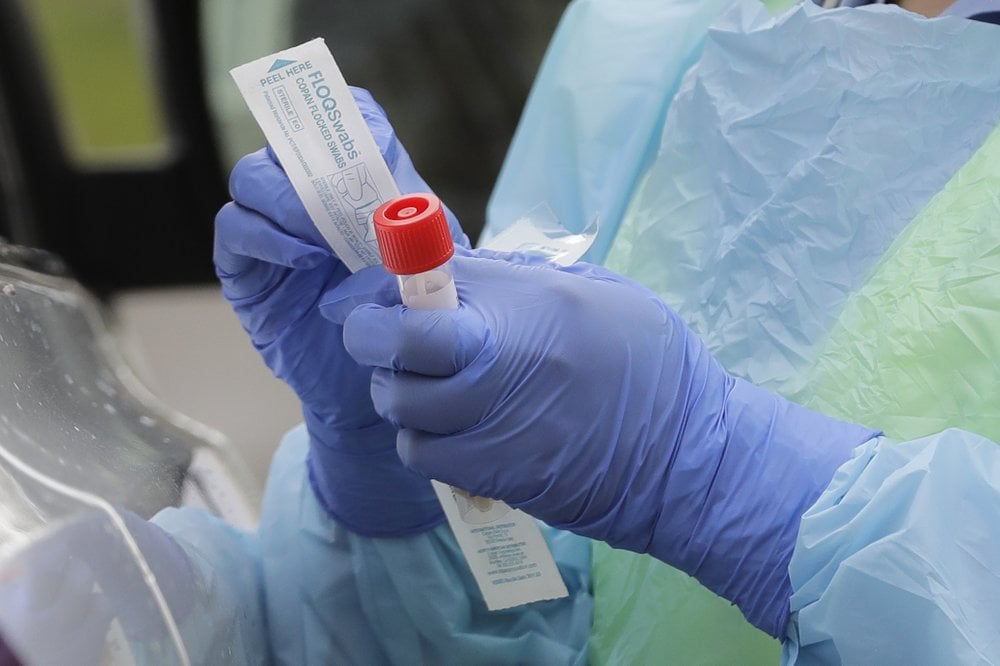
South Florida’s tri-county area is seeing its highest ever number of new COVID-19 cases, as Thursday’s report showed 3,671 new confirmed cases throughout the region.
The region’s three major counties also continue to see positivity rates — the share of tests that come back positive — above 10%.
Thursday’s report, which covers data through Wednesday, saw Palm Beach County add 411 new cases with a positivity rate of 12.6%.
In Broward, one county to the south, there were 954 newly-confirmed cases with a 13.6% positivity rate.
In Miami-Dade, Florida’s most populous county and the region hardest hit by the outbreak, officials recorded 2,306 new cases with a 19.5% positivity rate.
Those 3,671 new positive tests are the highest the region has seen since cases began being recorded in March.
The spike comes after several days where that number had dropped from previous high marks seen this past weekend. Digging into the data, however, shows concerning signs persisted even as that raw total of new daily cases dipped.
That’s because the number of new daily cases on its own is not a comprehensive metric to evaluate the extent of the virus’s spread. The number can be heavily influenced by the number of tests conducted. As officials test more people, they find more cases. As they test fewer people, the opposite is true.
Testing capacity was clearly reduced the past three days. From June 25-27 — as both raw new cases and the region’s positivity rate spiked — officials recorded an average of around 22,000 new tests per day.
For the reports covering Sunday, June 28 and Monday, June 29, those totals were 15,395 and 16,425 new tests, respectively. Wednesday’s report — covering the final day of June — saw less than 12,000 tests recorded in the region.
By Thursday’s report, the number was back up to its weekend highs at just above 22,000. The share of tests which came back positive jumped in all three counties, however, leading to a higher number of new positives.
Week-to-week trends show all three counties returning both a higher number of new cases and a higher share of new cases.
From June 18-24, Palm Beach County recorded 292 new cases per day with a 10.4% overall positivity rate. Those numbers jumped to 429 new cases per day with positivity rate of 11% from June 25-July 1.
From June 18-24, Broward County had 361 new cases per day with an 8.9% positivity rate. From June 25-July 1, the numbers increased to 646 new cases per day and a 12.1% positivity rate.
In Miami-Dade, there were 713 new cases per day from June 18-24, with a 12.8% positivity rate. Those numbers rose to 1,655 new cases per day with a massive 17.1% positivity rate from June 25-July 1.
Experts warn that sustained positivity rates above 10% are cause for concern.
High death rates and hospitalizations numbers can also show troubling trends.
All three counties still maintain an overall death rate higher than the state average through the duration of the outbreak. Broward sits at 2.4%, Miami-Dade is at 2.6% and Palm Beach County is at 3.6%. The state average is just under 2.2%.
The good news is the surge of the past few weeks is primarily among younger Floridians who are not susceptible to the virus’s worst effects.
While that can lower the death rate overall, hospital systems are still strained. On Wednesday, Miami-Dade County’s Jackson Health System announced it would pause elective surgeries starting next week due to concerns about capacity due to the virus. Other hospitals in South Florida have been forced to make similar moves.
Local officials have begun heavily restricting access to public places ahead of the July 4 weekend to help reduce large gatherings which could foster the virus’s spread. Miami-Dade County officials also instituted a countywide mask order Wednesday, following the lead of some mayors in the region.
Wednesday, Broward lawmaker Shevrin Jones — who has served eight years in the House and is not seeking a Senate seat — announced he had tested positive for COVID-19.
